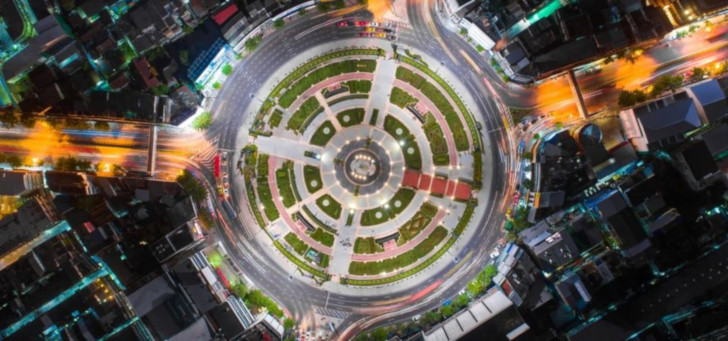When landscaping and transport networks join forces
Landscapes have been greatly damaged by extensions to transport networks over the last century. Consequently, more and more landscaping professionals are thinking about the possibility of reconciling the need for mobility with biodiversity. Is it possible to strike a balance?

Landscapes have been greatly damaged by extensions to transport networks over the last century. Consequently, more and more landscaping professionals are thinking about the possibility of reconciling the need for mobility with biodiversity. Is it possible to strike a balance?

Meeting the challenges of tomorrow through alternative development today
Integrate landscaping into transport networks meets several challenges facing public authorities including:
- the protection and valorization of biodiversity, essential for conserving a good air quality as well as animal and plant species require the creation of more green spaces;
- the creation of a new balance between towns and the countryside – the driving force behind green cities;
- the recuperation of spaces degraded by “urban scattering”, i.e. uncontrolled urban sprawl;
- the reduction of visual and noise pollution.
Rethinking transport networks is a real public health issue. Fortunately, there are a host of ideas about ecological urban planning!
Landscaping examples for future green cities to follow!
Roads lead to a new ideal
New road projects respect both the environment - and the views. On the island of Réunion the Tamarins Road was specifically designed to prevent the destruction of its environment and harmoniously integrate into the landscape with vistas over the savannas. Mexico city which has the most traffic jams in the world decided to vegetate the hundreds of pillars on the motorway to clean the air.
Roundabouts focused on biodiversity
Often decorated with statues or flower beds, roundabouts afford interesting opportunities for anyone interested in using them. Uptown Normal, Illinois, USA, has built a roundabout with a real green space in its center. It collects stormwater, purifies it and pipes it to a public fountain. This clever system solves rainwater management problems. An added benefit is that sound of running water damps traffic noise for park users!
Public transport changes to benefit everyone
Bus shelters are fun places for landscapers. In 2014 the city of Nantes (France) converted its bus shelters into transitory floral creations. The Toronto subway (Canada) vegetated the roof of its subway stations. And the Spanish capital Madrid is going even further with a project to revegetate the roofs of its buses!
All the indicators are in the green for the progressive, sustainable transformation of transport networks. The need for energy transition and the approaching after-oil era offer new opportunities for ecological town planning to reconquer spaces in which the vegetation has been asphyxiated by atmospheric pollution. A beautiful prospect for the future of urban spaces - and landscape architects!
Photo credit: © pengzphoto / stock.adobe.com Icon: Icons8

